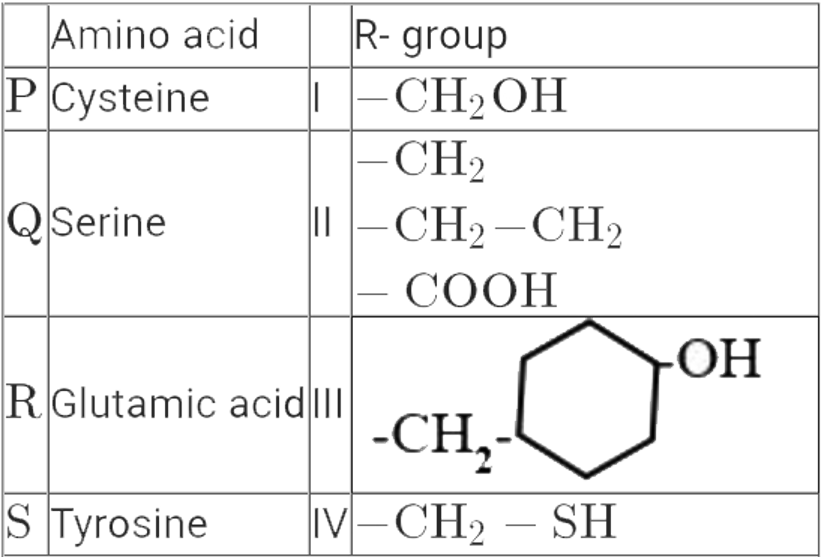Assertion: Reductive amination involves the transfer of amino group from one amino acid to the keto group of a keto acid.
Reason: In reductive amination, transfer of NH2 from glutamic acid takes place.
If both assertion and reason are true and reason is the correct explanation of assertion
if both assertion and reason are true but reason is not the correct explanation of assertion
if assertion is true but reason is false
if both assertion and reason are false
The correct Answer is:D
To analyze the given assertion and reason, we can break down the solution into the following steps:
1. Understanding the Assertion:
- The assertion states that "Reductive amination involves the transfer of amino group from one amino acid to the keto group of a keto acid."
- In reductive amination, the process typically involves the combination of ammonia with a keto acid to form an amino acid, not the transfer of an amino group from one amino acid.
2. Understanding the Reason:
- The reason states that "In reductive amination, transfer of NH2 from glutamic acid takes place."
- This statement is misleading because the transfer of the amino group from glutamic acid occurs in transamination, not reductive amination.
3. Differentiating Reductive Amination and Transamination:
- Reductive amination involves the direct combination of ammonia with a keto acid (like alpha-ketoglutarate) to form an amino acid, facilitated by enzymes such as glutamate dehydrogenase.
- Transamination, on the other hand, is the process where an amino group is transferred from one amino acid (such as glutamic acid) to a keto acid, forming a new amino acid and a new keto acid.
4. Evaluating the Truth of the Statements:
- Since the assertion incorrectly describes reductive amination and the reason incorrectly describes the process involved in reductive amination, both statements are false.
5. Conclusion:
- Therefore, the correct answer is that both the assertion and reason are false.
Final Answer:
Both assertion and reason are false.
---
- The assertion states that "Reductive amination involves the transfer of amino group from one amino acid to the keto group of a keto acid."
- In reductive amination, the process typically involves the combination of ammonia with a keto acid to form an amino acid, not the transfer of an amino group from one amino acid.
- The reason states that "In reductive amination, transfer of NH2 from glutamic acid takes place."
- This statement is misleading because the transfer of the amino group from glutamic acid occurs in transamination, not reductive amination.
- Reductive amination involves the direct combination of ammonia with a keto acid (like alpha-ketoglutarate) to form an amino acid, facilitated by enzymes such as glutamate dehydrogenase.
- Transamination, on the other hand, is the process where an amino group is transferred from one amino acid (such as glutamic acid) to a keto acid, forming a new amino acid and a new keto acid.
- Since the assertion incorrectly describes reductive amination and the reason incorrectly describes the process involved in reductive amination, both statements are false.
- Therefore, the correct answer is that both the assertion and reason are false.
Both assertion and reason are false.
Topper's Solved these Questions
- MINERAL NUTRITIONBOOK - NCERT FINGERTPS ENGLISHCHAPTER - MINERAL NUTRITIONEXERCISE - Mineral Nutrition
130 Videos
- MINERAL NUTRITIONBOOK - NCERT FINGERTPS ENGLISHCHAPTER - MINERAL NUTRITIONEXERCISE - Mineral Nutrition
130 Videos
- LOCOMOTION AND MOVEMENTBOOK - NCERT FINGERTPS ENGLISHCHAPTER - LOCOMOTION AND MOVEMENTEXERCISE - Locomotion And Movement
139 Videos
- MORPHOLOGY OF FLOWERING PLANTSBOOK - NCERT FINGERTPS ENGLISHCHAPTER - MORPHOLOGY OF FLOWERING PLANTSEXERCISE - Morphology Of Flowering Plants
135 Videos
Similar Questions
Knowledge Check
Removal of amino group of amino acid to transform in into keto acid is
AtransaminationBammonificationCdeaminationDNone of these
The urea is formed from an amino acid
View SolutionMention the functional group of amino acids involved in the formation of a peptide bond.
View SolutionMatch the amino acid with its correct R group .

View SolutionThe functional group which found in amino acid is
View SolutionWhat are the reaction involved in the reductive removal of nitro group from an aromatic compound?
View SolutionTransfer of genetic information from a polymer of nucleotides to a polymer of amino acid is -
View SolutionAmino acids are produced from
View Solution
